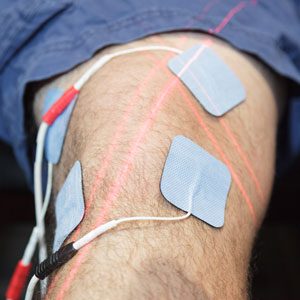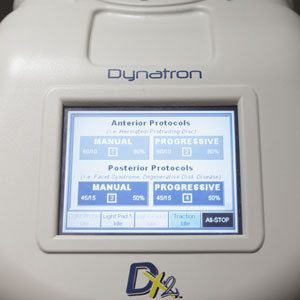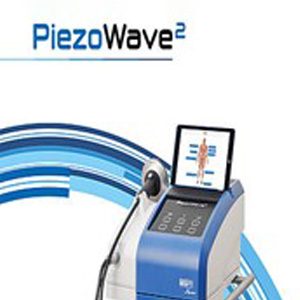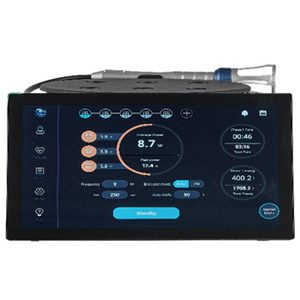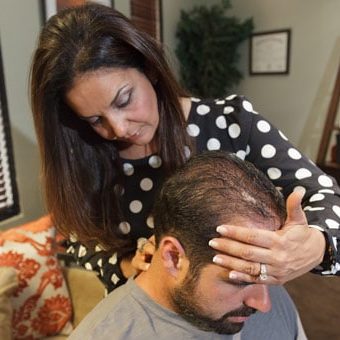Auto Injury

What You Should Know If You Have Been Involved In An Auto Accident
Injuries resulting from auto accidents attribute to stressful hurdles in today's society. Often, certain types of auto injuries in East Providence RI, Pawtucket RI, Providence RI, or Central Falls RI aren't initially apparent and remain hidden for months or even years. Problems occur when injuries are not properly dealt with or accident victims settle with insurance companies before getting checked by doctors specializing in soft tissue injuries.
Why? Because once you settle your case, you lose the right to have your insurance company pay for treatment if you need it. A good rule of thumb is to be informed of your rights and then make a decision. We believe, if you were indeed injured, you should get the care you need to get back to the way you felt and functioned just before the accident.
Here's where the problem begins... Most people who suffer from an auto accident have one thing on their mind: their automobile! And the last thing on their mind is: "Am I Really O.K.?"
ACCIDENTS HAPPEN AND USUALLY WHEN YOU LEAST EXPECT IT!
You (or someone you know) may be experiencing pain after an automobile accident, and even after receiving care at a hospital or clinic, you realize the pain is still present! The reason is that medications only mask the symptoms associated with the injuries from the accident, they do not address the injuries themselves. That is why you continue to experience pains, headaches, sleep interruption, and difficulties trying to do daily activities as simple as reading, working on a computer, watching television, and even doing simple tasks around the house.
It is possible that injuries caused to the neck or back during the accident may also have pain delays. You thought you were okay, but then the pains came on and won't go away. This is due in part to the possible bad positioning of the spinal bones and damage done to the muscles, ligaments, and tendons during the accident, caused by the sudden "whipping" motions that often occur during these accidents. The amount of stress that may cause injury to the body, particularly the neck, can be caused by even small impacts from the other vehicle.
Independent studies performed by non-profit neutral parties have shown that the driver or passenger in the vehicle being struck can experience strong enough forces on their bodies to produce injury with speeds as little as 3.9 mph, in a rear-end collision.
*These forces can increase rapidly as the speed and size of the car hitting your vehicle increases.
You deserve to get the treatment you need at an office where the proper diagnostic protocol is followed and where you can receive the highest quality care and attention you deserve. We have spent years treating patients who have been involved in injury accidents. It is important that the physician treating your injuries knows and understands the proper care guidelines that have been put in place by the State of Rhode Island. Understanding these important facts makes us unique in the healthcare arena. We work hard to make our patients feel not only at ease while in our office but also to make sure they are properly cared for. The evaluation, treatment protocol, follow-up care, and home exercises that we train you personally to do at home, allow you to properly respond to the wonderful care we provide at our office.
Whether you are in a present treatment program or not, if you are still experiencing difficulties, don't delay any further and call our office. Our friendly staff will help you make it through this trying time in your life and put a smile back on your face.
Call us today at (401) 435-2002, so that we can get you back into your normal daily routine and begin to remove the stress you are presently feeling. We look forward to serving your needs and the needs of those that you feel will benefit from what we have to offer the community.
Forms
WHIPLASH
Whiplash is a sudden, moderate-to-severe strain affecting the bones, discs, muscles, nerves, or tendons of the neck. Regardless of whether it results from an auto accident, physical activity, or work-related mishaps, whiplash necessitates a complete chiropractic evaluation.
DESCRIPTION
The neck is composed of seven small bones. Known as the cervical spine, these bones:
- Support the head
- Help maintain an unobstructed enclosure for the spinal cord
- Influence the shape and structure of the spine
- Affect posture and balance
About 1,000,000 whiplash injuries occur in the United States every year. Most are the result of motor vehicle accidents or collisions involving contact sports. When unexpected force jerks the head back, then forward the bones of the neck snap out of position and irritated nerves can interfere with flow of blood and transmission of nerve impulses. Pinched nerves can damage or destroy the function of body parts whose actions they govern. Nearly half of all whiplash victims claim to suffer from symptoms even two years after settling their insurance claims.
The pain may be on one side or both, on again off again or constant, in one spot or more general. These headaches, like the neck pain, are often the result of tightened, tensed muscles trying to keep the head stable and, like tension headaches; they are often felt behind the eyes.
Shoulder pain often described as pain radiating down the back of the neck into the shoulder blade area, may also be the result of tensed muscles.
Muscle tears are often described as burning pain, prickling or tingling. More severe disc damage may cause sharp pain with certain movements, with or without radiation into the arms, hands and fingers, which are relieved by holding your hand over your head.
The chart below lists the most common whiplash symptoms. If you experience any of these symptoms, play it safe and get a chiropractic checkup. Basic whiplash symptoms include:
- Neck pain and/or stiffness
- Blurred vision
- Difficulty swallowing
- Irritability
- Fatigue
- Dizziness
- Pain between the shoulder blades
- Pain in the arms or legs, feet, and hands
- Headache
- Low back pain and/or stiffness
- Shoulder pain
- Nausea
- Ringing in the ears
- Vertigo
- Numbness and tingling
- Pain in the jaw or face
If you have suffered a whiplash-type injury to the neck, chiropractic care is a good choice to reduce pain and return proper mechanics to the cervical spine. It is important to emphasize that spinal manipulation is introduced by your chiropractor only when the initial traumatic muscle injury is stabilized. The chiropractors at DeCrescenzo Chiropractic will be using various types of treatments depending on the stage of your whiplash injury.
THE STAGES OF WHIPLASH TREATMENT
Shortly after the injury - the acute phase - the chiropractor will concentrate on reducing inflammation with therapy methods, such as ultrasound, and, if indicated, gentle stretching and manual therapies, such as muscle energy therapy. Ice will be recommended and sometimes a light neck support might be prescribed for a short period of time.
As the neck begins to be less inflamed and acute - the chiropractor will utilize gentle spinal manipulation, or adjusting, in order to return motion to spinal joints that have locked up and become restricted as a result of the injury. In some patients, non-thrusting and non-force methods are more appropriate, including the flexion-distraction technique.
CHIROPRACTIC DIAGNOSIS/CARE AND WHIPLASH
Chiropractors are doctors who specialize in the care of non-surgical conditions of the neck with gentle, time-saving approaches that address the mechanical and neurological causes of a whiplash injury.
Chiropractors are rigorously trained to diagnose the different types of neck injuries. The goal of chiropractic care in treating whiplash injuries is to optimize motion in the spine, treat the spinal discs, reduce muscle spasm,s and improve muscular strength.
Even if you go to the chiropractor complaining of neck pain following an accident, he or she will evaluate your spine as a whole. The chiropractor will check your neck (cervical spine), mid-back (thoracic spine), and low back (lumbar spine). It's important to examine the entire spine because even though it's just your neck that hurts, other regions of the spine may be affected.
Your chiropractor will determine areas of restricted joint motion, disc injury, muscle spasm, and ligament injury. One way the chiropractor does that is through motion and static palpation, diagnostic techniques unique to chiropractic. Motion and static palpation is an examination by means of touch. The chiropractor will feel for tenderness, tightness, and how well each spinal joint moves.
The chiropractor will also analyze how you walk and look at your overall posture and spinal alignment. Those details will help your chiropractor understand your body mechanics and how well your spine is working and moving.
You'll also go through your past medical history with the chiropractor. Your chiropractor will have x-rays of your spine taken to evaluate possible degenerative changes, or an MRI if it is indicated.
Chiropractors are specialists in spinal manipulation-an active, hands-on care that returns motion to the spine. The restricted motion and disturbed mechanics that characterize whiplash injuries are especially helped by spinal manipulation in patients who are considered good candidates for this approach.
After the examination, the doctors at DeCrescenzo Chiropractic will be able to create an effective treatment plan for your neck pain.
POSSIBLE CHIROPRACTIC TREATMENT APPROACHES FOR TREATING WHIPLASH INJURIES
The exact treatment plan depends on your diagnosis. Your chiropractor may use a type of spinal manipulation, or spinal adjustment, to improve joint motion and soft tissue health.
Some spinal manipulation techniques are:
- Specific spinal manipulation: The chiropractor identifies the joints that are restricted or show abnormal motion, also called subluxations, and returns motion to the joint with a gentle thrusting technique. This gentle thrusting rapidly stretches soft tissue and stimulates the nervous system to return normal motion to the spine.
- Flexion-distraction technique: This is a gentle, non-thrusting type of manipulation used to treat bulging or herniated discs with or without arm pain. (The whiplash injury may aggravate a bulging or herniated disc.) This treatment is still hands-on, utilizing a specialized table to assist, the chiropractor performs a slow pumping action on the disc instead of direct force.
- Instrument-assisted manipulation: This is another non-thrusting technique. Using a hand-held instrument, the chiropractor can apply force without thrusting into the spine. This is especially appropriate in older patients with degenerative joint syndrome.
The chiropractor may also use manual therapy to treat injured soft tissues such as ligaments and muscles. Some examples are:
- Trigger point therapy: The chiropractor identifies specific hypertonic (tight), painful points on a muscle. He or she puts direct pressure (using the fingers) on these points to relieve the tension.
- Manual joint stretching and resistance techniques: Muscle energy therapy, an osteopathic technique, is an example of resistance manual joint therapy.
- Instrument-assisted soft tissue therapy: The chiropractor may use the Activator technique, an instrument-assisted therapy to treat the injured soft tissue.
In addition to spinal manipulation and manual techniques, the chiropractor may use various therapy modalities to help reduce inflammation caused by whiplash. Some examples are:
- Interferential electrical stimulation: This uses a low-frequency electrical current to stimulate your muscles in order to reduce inflammation.
- Ultrasound: By increasing blood circulation, ultrasound helps reduce muscle spasms, stiffness, and pain. It does this by sending sound waves deep into your muscle tissues, creating a gentle heat that enhances circulation and heating.
To reinforce the improved joint mechanics (return of normal spinal motion), your chiropractor will prescribe therapeutic exercises.
Chiropractors are "whole person" doctors who view neck pain as unique to each patient. Therefore, they don't focus on just your neck pain. Chiropractic care includes nutrition, stress management, and lifestyle goals (because all of those can add to neck pain and it's necessary to address them if you really want to relieve your pain).
Chiropractors emphasize prevention as the key to long-term health-another example chiropractors look at the whole person, not just the painful problem. Keeping the neck and back healthy is vital to the chiropractic approach to care.
HOW CHIROPRACTIC HELPS PATIENTS WITH WHIPLASH INJURIES
A chiropractor will help you return to your normal activities quickly so that you can enjoy your daily life without pain. He or she will work to address the underlying mechanical (how the spine moves) or neurological (nerve-related) causes of your whiplash injury.
VERTIGO & DIZZINESS
CHIROPRACTIC TREATMENT AND VERTIGO
Vertigo is a common symptom present in chiropractic patients, especially after head and neck trauma. Vertigo and dizziness can be very disabling complaints.
It is a sense of dizziness or spinning, sometimes associated with symptoms such as nausea, vomiting, and sweating.
It can have many causes and in most cases, it is a treatable condition. The treatment used obviously depends on the cause. That is why the chiropractor has to do a thorough examination when you first come in for treatment.
In some cases, you may have to be referred to a neurologist for further assessments. The good news is that most patients respond well to conservative care.
One of the most common causes of vertigo and dizziness is Benign Paroxysmal Positional Vertigo (BPPV), also called Benign Vertigo or Positional Vertigo.
WHAT DOES THE NAME BENIGN PAROXYSMAL POSITIONAL VERTIGO (BPPV) MEAN?
- Benign - a non-progressive condition
- Paroxysmal - sudden and unpredictable in onset
- Positional - episodes are caused by a change in head position
- Vertigo - a sense of dizziness or spinning
The inner ear contains fluid that allows the brain to sense movement and maintain balance. The cause of BPPV is a dislodgement of small calcium carbonate crystals, known as otoconia, that then float in the inner ear fluid. These crystals strike against the sensitive nerve endings and cause the symptoms of BPPV.
WHAT ARE THE CAUSES OF BPPV?
This inner ear condition often begins after:
- A head injury
- A severe cold or virus
- Due to aging process
- Minor strokes
- Use of medications that have a toxic effect on the ear, especially on its nerve supply e.g. gentamicin
The most common cause in the under 50's is head trauma and whiplash.
In older people, the most common cause is degeneration of the vestibular system of the inner ear and BPPV becomes much more common with advancing age.
Generally, about 20% of all cases of dizziness are due to BPPV and about 50% of all dizziness in older patients is due to BPPV. Other common causes include acute vestibular neuronitis or labyrinthitis.
There are other, more serious, causes of vertigo such as stroke, tumors and neurological diseases such as MS. With these conditions there are other symptoms present as well and they are normally picked up in the chiropractic and neurological examination.
BPPV is a common condition that frequently goes undiagnosed and is treated symptomatically with drugs, such as Stemetil and Compazine (prochlorperazine), a sedative, which can make you feel very tired (If you take this drug you should not operate machinery or drive), and it can have many other side-effects.
WHAT ARE THE SYMPTOMS OF BPPV?
Symptoms can include the following:
- Severe but brief episodes of dizziness
- Hearing loss or ringing in the ears
- Feeling light-headed
- A feeling of imbalance and nausea
The symptoms usually start suddenly and often when waking from sleep. Episodes are triggered by changes in the position of the head e.g. getting out of bed or turning over in bed, tipping your head back to look up, and certain Yoga or Pilates positions such as the 'down dog'.
DIAGNOSIS OF BPPV
Chiropractors are able to diagnose this condition after taking a full case history and performing a physical and neurological examination. A firm diagnosis and the right treatment can help you get rid of this disabling condition, and quickly.
TREATMENT OF BPPV
The condition is treated by certain repositioning maneuvers. Chiropractors at the DeCrescenzo Chiropractic are trained to perform the Epley or Semont Maneuver, which is a simple and well-tolerated technique.
The chiropractor will move you into specific positions depending on what has previously been found in the assessment, using gravity to move the calcium carbonate crystals away into an area of the inner ear where they will cause no further symptoms.
This is followed by home exercises, so-called Vestibular rehabilitation exercises. The treatment is very effective and within 3-4 treatments 80% of patients are symptom-free. The symptoms can recur, however, research shows a relatively low recurrence rate of about 15 percent per year.
Chiropractic treatment might not be the first thing you think of if you have dizziness, but the maneuvers and treatment used are the same as you would have if you go to medical clinicians who specialize in these conditions.
Chiropractic is not suited for all types of dizziness, but if we can't help you we will refer you back to your General Practitioner.
If you have any of the above symptoms and want further information, please call one of the DeCrescenzo Chiropractic centers at (401) 435-2002 or contact us here.
Don't rely on symptomatic relief. Taking medication for this condition is not the answer.
GET STARTED TODAY AT DECRESCENZO CHIROPRACTIC!
RANKED #1 ON RATEMD
INJURED IN A CAR ACCIDENT?
Most people only think about their automobile in an accident. Make sure you are truly "O.K." before you settle your case! Learn more...
HURT AT WORK?
It's important to understand that chiropractic care is covered by worker's compensation insurance, and is effective and cost-efficient. Learn more...
TREATMENTS WE OFFER
Learn more about the cutting-edge procedures used in our offices:
CONTACT US


